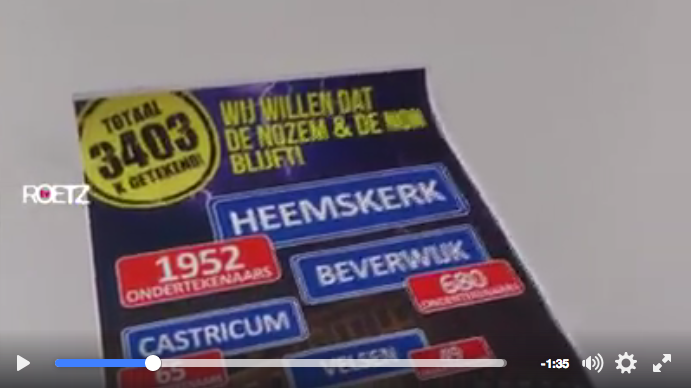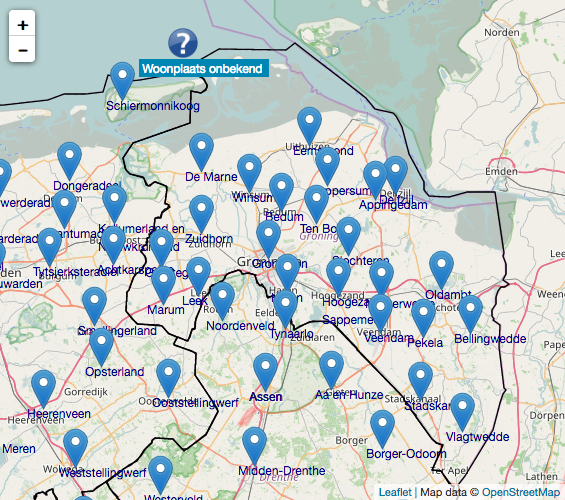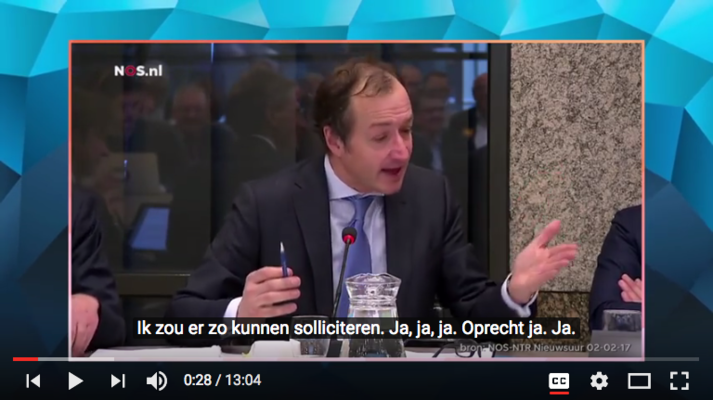Updates
A Ticket System for Government (Or: Let’s Finally Give the Ombudsman Teeth)
The ombudsman, as it stands, is a shark without teeth. It cannot even smell a scandal if it was bleeding before their eyes — can’t sense, can’t bite, can’t act, can’t fix. It’s a watchdog with no jaws. So let’s give it an upgrade or even better give the government such an upgrade that Ombudsman loses the necessity for their entire existence.
This isn’t some grand ideological revolution. It’s just a silly idea for a public ticket system. Silly, but powerful.
Imagine a civic ticket system — not buried in obscure forms, not locked in back-office email chains. Just like an internal help-desk, but for governance. Public, structured, traceable. And smart.
This is what it looks like.
Core Idea
Citizens should be able to report issues publicly — not buried in anonymous inboxes, not hidden behind “ongoing investigation” seals. People already talk about public issues. If people can talk about public issues with their friends, why can’t they track them together too?
A government ticket system could work just like internal systems in IT or customer service — but with a civic twist.
This is not a place for endless debate. It’s a structure to frame problem → proposal → response, cleanly and traceable.
This system proposes a transparent, iterative problem-solving interface where AI is used not to obscure, but to clarify.
The System: Public, AI-Structured, and Transparent
The system is made up of 4 stages — and yes, it uses AI — but only as a tool to help people sharpen what they’re already saying.
Every issue goes through this cycle:
1. Problem Description
a) Citizens submit an issue.
b) The AI cleans up the language, consolidates overlapping inputs, and upgrades the coherence of the report.
c) A public change-log shows the input that evolved the description — all steps visible, all input attributable.
2. Proposed Solution
a) Based on the refined problem description, the AI drafts a solution or possible action path.
b) This is visible to the public as a formal response — no magic, just structured reasoning.
c) This is not a decision. It’s a draft — structured logic, not authority. Only advice.
3. Critique Layer
a) Citizens respond to the proposed solution — a structured challenge to the proposal..
b) Their remarks are also structured by AI — not censored, but upgraded for clarity and grouped by theme or angle.
c) Again, change-logs and input trails are visible. No anonymous edits. No hidden manipulations.
d) in a sense this is the same as step 1 (problem description)
4. Upgraded Solution
a) The AI integrates valid critiques and proposes a refined version of the solution.
b) This is the “feedback-reinforced” stage, where the system attempts synthesis, not endless argument loops.
All stages remain visible — including abandoned tickets, failed resolutions, and ongoing ones. This creates a living public record of issues and proposed governance responses.
This is the synthesis. 1 = 2 + 3 = 4.
Why This Matters
- It forces clarity and traceability. No more vague complaints floating in chaos.
- It turns public input into a collaborative upgrade process.
- It shows which tickets are being handled, stalled, ignored — in plain sight.
- It makes every AI edit accountable, not mysterious.
- It doesn’t replace the ombudsman — it arms them.
Business Model? Sure — But Keep It Public
Yes, this is a product. But no, it shouldn’t be commercialized. This is civic infrastructure. It belongs to the commons.
It could be sold to municipalities, NGOs, or transparency coalitions — but that defeats the purpose.
Build it, release it, and let it run at zero cost. The public has already paid for enough systems that don’t work. This one should.
The value lies not in monetization — but in legitimacy.
Expanded Use: From Complaint Board to Administrative Operating System
What starts as a feedback tool can evolve into a complete civic engine. The system can scale:
- Reported Issue
- Processed Issue (by a public servant or automated filter)
- AI-generated remark on process adequacy (4-stages again)
- Re-open option if resolution was insufficient (4-stages again)
- Cross-department visibility and workflow mapping
- The ticket can go through different departments and the work of each department remains visible.
Each issue flows like a case file, but it’s public-facing and structurally transparent. Departments can adopt the system internally. Citizens and officials see the same state of the case. Updates are traceable.
With enough refinement, this system could even approach pre-judicial arbitration or replace lower-level administrative courts — especially for predictable, repeatable types of disputes (benefits, housing, permit denials, etc.).
At some point a judge and lawyer can then bend over the case after it went through these 3 steps.
Design Philosophy
- Public by default.
- AI-enhanced, not AI-obscured.
- Built around iteration, not resolution-hiding.
- Input is traceable. Reasoning is legible. Logic is public.
- Not built to silence citizens with forms — but to cohere chaos into clarity.
Potential Impact:
If deployed at scale, this would:
- Reduce performative complaint culture (“I ranted online!”) in favor of traceable input.
- Provide oversight journalists and watchdogs with live case data.
- Offer civil servants a way to separate noise from signal.
- Create longitudinal accountability: we’d know what failed, what improved, and why.
- We can track government efficiency through details such as backlog and amount of re-opened cases
Final Thought
Let’s stop treating public concern like noise.
Let’s give it a ticket.
Let’s give the ombudsman jaws.
Give people a way to speak clearly. Let the problems stay visible. Let the fixes be criticized. Let the system evolve in full view.
Democracy doesn’t die in darkness — it suffocates in forms. We’ve normalized arbitrary bureaucracy and opaque complaint systems. But the technology to upgrade them exists. All we’re missing is the will — and the will can be crowd-sourced.
Written by Artorius Magnus
https://tinyurl.com/laconic-utopia World-Peace suggestions @250 articles highschool dropout-autodidact (unofficially 5+ PhD's).
Twijfel bij enige potentiële huurder van de Donjon
Op de protestbijeenkomst van afgelopen zaterdag zijn terechte vraagtekens geplaatst bij de enige potentiële huurder van de Donjon. Het is een reëel gevaar dat de Nijmeegse belastingbetalers straks toch nog zullen opdraaien voor de kosten van deze neptoren.
Op Facebook geeft Huub Bellemakers een toelichting.
Petitie overhandigd aan de wethouder op 21 maart 2017
De petitie is overhandigd aan de wethouder op 21 maart 2017.
Petitie overhandigd aan de gemeenteraad van Heemskerk op 2 februari 2017
Zie de verspreiding van ondertekenaars
Op dit interactieve kaartje ziet u de verspreiding van de ondertekenaars over de provincie Groningen of heel Nederland. Per gemeente kunt u ook zien hoeveel er per plaats tekenden.
Ook kunt u onder 'statistiek' een staafdiagram met de aantallen ondertekenaars per provincie zien en een taartdiagram met hoeveel procent uit welke provincie komt: Groningen, Holland, Drenthe, Friesland, etc.
Het aantal ondertekeningen per provincie in percentage ten opzichte van het aantal inwoners is bijvoorbeeld:
| Provincie | Inwoners | Ondertekeningen | Percentage |
|---|---|---|---|
| Groningen | 583.635 | 34.626 | 5,93 |
| Drenthe | 488.505 | 9.050 | 1,85 |
| Friesland | 646.005 | 5.616 | 0,87 |
| Noord-Holland | 2.784.635 | 15.251 | 0,55 |
| Utrecht | 1.273.615 | 6.697 | 0,53 |
| Overijssel | 1.144.115 | 5.079 | 0,44 |
| Gelderland | 2.035.260 | 8.454 | 0,42 |
| Flevoland | 406.155 | 1.656 | 0,41 |
| Zuid-Holland | 3.622.195 | 11.240 | 0,31 |
| Noord-Brabant | 2.498.360 | 6.980 | 0,28 |
| Zeeland | 381.250 | 1.033 | 0,27 |
| Limburg | 1.113.800 | 2.064 | 0,19 |
(bijgewerkt 7-5-'17)
En er komen ook ondertekenaars uit het buitenland.
De top-10:
| aantal | land |
|---|---|
| 155 | Frankrijk |
| 104 | Duitsland |
| 104 | België |
| 72 | Spanje |
| 43 | Engeland |
| 40 | Verenigde Staten |
| 36 | Zweden |
| 36 | Australie |
| 32 | Noorwegen |
| 29 | Portugal |
(bijgewerkt 7-5-'17)
Meer dan 2000 ondertekenaars petitie 'Stop bureaucratie hulpmiddelenzorg voor mensen met een oogaandoening'
Ruim 700 bezoekers van de ZieZo-hulpmiddelenbeurs op 24 en 25 maart 2017 steunen de petitie 'Stop bureaucratie in de hulpmiddelenzorg'.
Samen met de 1300 ondertekenaars via internet, steunen meer dan 2000 mensen onze petitie.
Dank aan alle ondertekenaars van de hulpmiddelenpetitie! We houden u op de hoogte over het vervolg..
het nut en effect van deze petitie:
Mede dankzij deze petitie heeft de gemeente besloten om te bemiddelen tussen Jacob Hooy en de nieuwe eigenaar NBM.
Er hebben reeds 2 gesprekken plaatsgevonden en NBM heeft meerdere keren gezegd enorm te hebben onderschat wat de impact en betekenis van deze prachtige winkel is.
Op dit moment wordt er gekeken of het funderingsherstel in de kelder plaats kan vinden zonder de winkel hiermee zwaar te belasten.
De gemeente heeft ook duidelijk gemaakt dat het gehele interieur een hoge monumentale waarde heeft waar niets aan mag worden gedaan.
Wij hebben NBM een voorstel gedaan om een hogere huur te betalen (getaxeerde huurwaarde door NBM zelf gedaan) en de kelder en achterdeel van het pand af te staan zodat daar de opgang naar de appartementen kan worden gemaakt. Het zou alleen nog stuk kunnen lopen wanneer NBM een veel hogere huur wil hebben dan wat reeel is maar daar gaan wij natuurlijk niet mee akkoord. Daarnaast loopt het hoger beroep door NBM aangespannen gewoon door. Zoals u allen kunt lezen heeft de petitie geleid tot overleg en een bemiddelende rol van de Gemeente en we gaan voor een goeie afloop. De volgende afspraak is in mei en ik zal u op de hoogte houden.
Met vriendelijke groeten
Rik Oldenboom
Jacob Hooy & Co BV .
Wederom nieuws over verdwenen stembiljetten!!
http://liefdevoorholland.com/fraude2.


